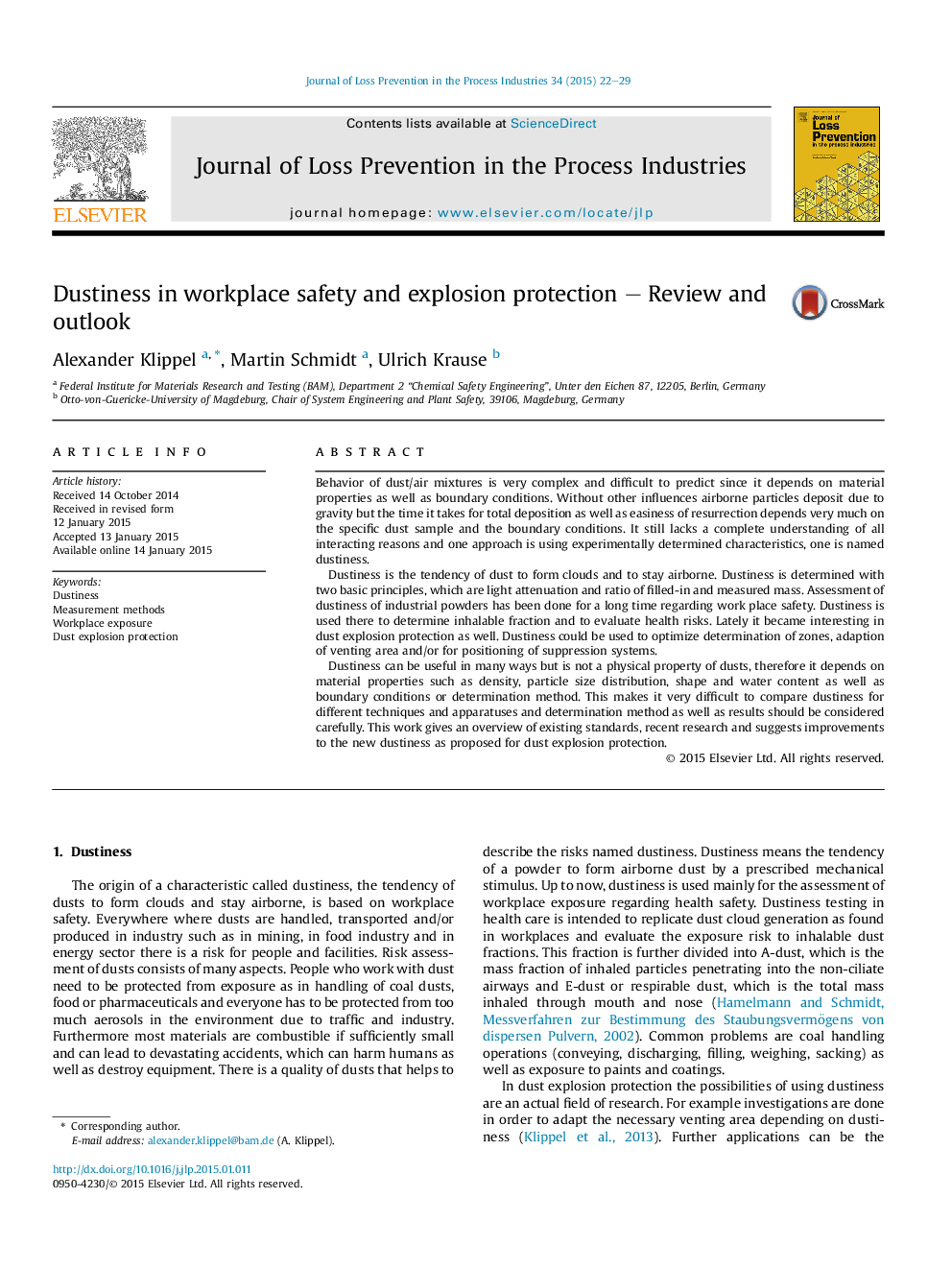| Article ID | Journal | Published Year | Pages | File Type |
|---|---|---|---|---|
| 585987 | Journal of Loss Prevention in the Process Industries | 2015 | 8 Pages |
•Overview of existing methods to determine dustiness.•Discussion of comparability of different methods.•Discussion of future improvements of measuring devices.
Behavior of dust/air mixtures is very complex and difficult to predict since it depends on material properties as well as boundary conditions. Without other influences airborne particles deposit due to gravity but the time it takes for total deposition as well as easiness of resurrection depends very much on the specific dust sample and the boundary conditions. It still lacks a complete understanding of all interacting reasons and one approach is using experimentally determined characteristics, one is named dustiness.Dustiness is the tendency of dust to form clouds and to stay airborne. Dustiness is determined with two basic principles, which are light attenuation and ratio of filled-in and measured mass. Assessment of dustiness of industrial powders has been done for a long time regarding work place safety. Dustiness is used there to determine inhalable fraction and to evaluate health risks. Lately it became interesting in dust explosion protection as well. Dustiness could be used to optimize determination of zones, adaption of venting area and/or for positioning of suppression systems.Dustiness can be useful in many ways but is not a physical property of dusts, therefore it depends on material properties such as density, particle size distribution, shape and water content as well as boundary conditions or determination method. This makes it very difficult to compare dustiness for different techniques and apparatuses and determination method as well as results should be considered carefully. This work gives an overview of existing standards, recent research and suggests improvements to the new dustiness as proposed for dust explosion protection.
